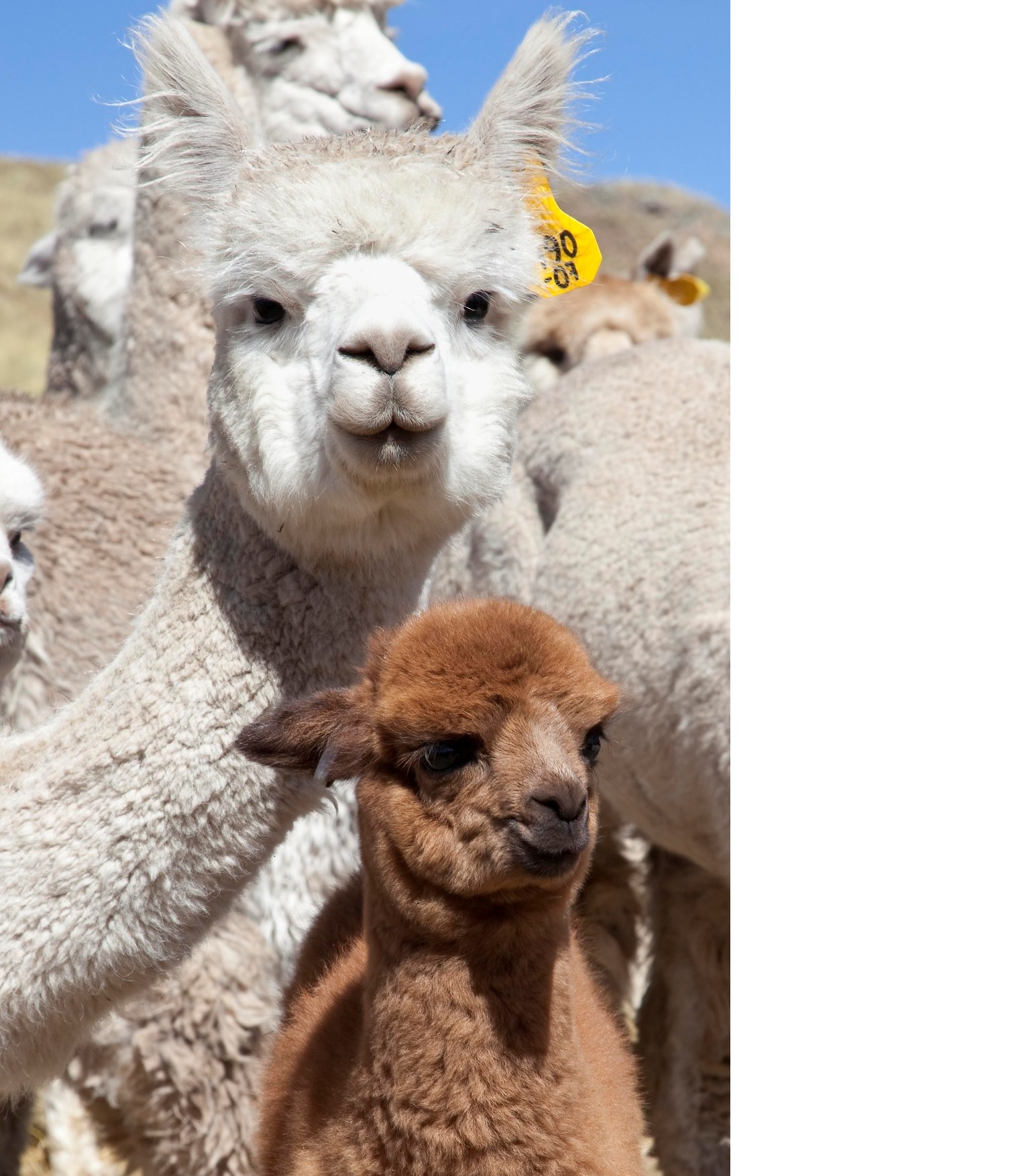About This Project
Alpacas originated in South America and they have many characteristics and uses: from providing fiber for clothes, to helping us understand adaptation to high altitude. Alpacas come in a huge range of colors, more than any other livestock species. But we don’t understand how the colors are inherited. If we had a better genome, we could find the genes that control color, and develop a test to predict what colors an alpaca will produce. This genome will be available for everyone as a resource.
Ask the Scientists
Join The DiscussionWhat is the context of this research?
In 2005 I became aware that people wanted to know more about how color was inherited in alpacas, because it was very complex. At the time, there was no reference genome, so we could only compare alpacas to other species. In 2008, the first reference genome was created, with a second one following in 2012. This genome is used across the world to study color genetics, diseases in alpacas, & for conservation programs, but it's not good enough. I'm specifically interested in how the colors of alpaca fiber (e.g. grey, roan, & white) are passed on. Why? So that the industry, including subsistence farmers in South America, can produce the fiber colors that are in demand. The demand for environmentally friendly fiber is growing, and alpacas, with their colourful fiber, can meet this demand.
What is the significance of this project?
Alpacas have many useful characteristics, such as producing environmentally friendly fiber, & food & clothing for traditional farmers in South America. Amazingly, alpacas remain disease-free despite having high blood glucose levels, so studying this could help us to understand diabetes better. They also naturally produce antibodies that are ideal for making snake anti-venom, & are well adapted to high altitudes. A high-quality genome would help us study & understand these exciting traits. However, the current genome is only a good draft. If we were able to add PacBio SMRT long-read sequencing data to the existing data, we could make a high-quality genome. In this "genomics" era of research, many more questions can be answered more quickly if a high-quality reference genome is available.
What are the goals of the project?
Our goal is very simple, to generate long-read sequence data that can be used to join together with the existing short- and medium-read data we have, and therefore create a high quality alpaca reference genome that can be used by researchers world-wide to solve problems and answer questions relating to alpacas.
Budget
This cutting-edge long-read sequence data will be added to the existing sequence data (which consists of both short- and medium-length reads) and that combination will allow us to create a high quality reference genome for the species. High quality reference genomes, where the data are arranged into chromosomes, are critical to research in many areas (e.g. health, productivity, environmental adaptation). At present, although alpacas have only 37 pairs of chromosomes, the current genome has over 5000 pieces!
Once we have this high-quality genome, we can use it to find the genes that control traits of interest, such as fiber color.
Endorsed by
Meet the Team
Affiliates
Affiliates
Kylie Munyard BSc (Hons) PhD
For as long as I can remember I've been an "animal person". This love of animals led me to a degree in Biology with Honours in Veterinary Biology, a PhD in Agriculture and then into research with and about animals. I've always focused on trying to solve problems or answer questions that have a real-world application. Colour inheritance has been a life-long passion, starting with horses as a teenager, then dogs, and now alpacas. My interest in alpacas started in 2005, and they still fascinate me today. I also teach Molecular Genetics in the School of Biomedical Sciences at Curtin University.
Mark F. Richardson
I am broadly interested in the evolutionary biology of natural populations. My research focuses on genetic and genomic analysis of contemporary population dynamics. I utilise bioinformatics and next-generation sequencing approaches to examine the link between the genome and the expressed phenotype. I am particularly interested in the mechanistic and evolutionary changes that occur in the genome (including structural changes, gene expression and epigenetics) during adaptation to novel environments.
Terje Raudsepp
EDUCATION
B.S./M.Sc. 1982, Genetics & Cytology, Tartu University, Estonia; Ph.D. 1999, Molecular Genetics, The Swedish University of Agricultural Sciences, Uppsala, Sweden.
BIOGRAPHY
Over 20 years of research experience in the areas of mammalian cytogenetics and genomics with special focus on the genomics of mammalian sex chromosomes, and the genomics of reproduction. Received funding from federal (USDA) and private (Morris Animal Foundation, American Quarter Horse Association, Alpaca Research Foundation) agencies. Publications: 109 research papers and 12 book chapters. Some published in high impact journals such as Science, PNAS, Cell, Genome Research, PLoS Genetics.
RESEARCH INTERESTS
Comparative genomics and molecular cytogenetics; Organization, function and evolution of sex chromosomes; Genomics of sexual development and reproduction; Equine genomics - genomics of genetic diseases and congenital disorders; Alpaca and camelid genomics.
Additional Information
We were finalists for the 2016 “Explore Your Most Interesting Genome” SMRT Grant program. We thank Pacific Biosciences, Sage Science and Computomics for co-sponsoring this fantastic opportunity. An especially big thank you to all of the people who voted for our project.

Project Backers
- 17Backers
- 21%Funded
- $1,037Total Donations
- $61.00Average Donation



